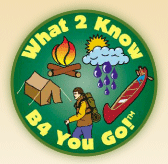During eight hours of instruction on the past two Thursdays Ron & Noah shared their knowledge of animal tracking and awareness skills with the already competent educational staffs of The Conservation Foundation and the Resiliency Institute, both of Naperville, Illinois .
On day one the participants learned how to identify footprints made by deer, canines, felines, rodents, and members of the weasel family; counting toes, looking for claw marks, and identifying the general shape of the prints. We then studied the ways in which animals walk and how those gaits reflect the “personalities” of the critters. Deer are “quiet walkers”, as are coyotes and bobcats. Bears and raccoons are the “tough guys” of the woods, so their walking style reflects confidence and lack of fear. The “ready-to-runs” are those prey animals whose gaits reflect living constantly on the edge between life and death. After Noah demonstrated all of these walking patterns (as best as they could be done by a human), all of the students tried their hands (and knees) at recreating the personalities of each class of animals.
The themes of the second Thursday were more esoteric, dealing not with measurable traits of animals but rather with subtleties that indicate their presence none-the-less. Answering questions such as: Who lives in that hole? Has that plant been chewed by a deer or a rabbit? Who’s scat is that and why is there so much in one place?
On a more personal level the participants practiced techniques designed to help them observe more wildlife, to walk quietly, to see better, and to hear more. For twenty quiet minutes they immersed themselves in an exercise that taught the principle of Concentric Rings, learning the concept that everything affects everything else. And they then had fun accepting the challenge of the Awareness Walk, using all of their newly learned skills to observe out-of-place artifacts in a natural setting.
Day two ended with a presentation on animal skulls. The names of the animals were not important. The emphasis was on how much could be learned simply by observing the teeth, the shape of the head, the location of the eyes, and more.
During each class the students were engaged and enthusiastic. They asked good questions, shared much of their own extensive knowledge, and good-heartedly participated in all of the exercises. They were indeed a pleasure to work with.



4 Comments until now
I am grateful for Ron’s teaching and story sharing. I highly recommend this workshop. I look forward to practicing what I have learned, reading the many new books Ron recommended, and maybe taking another course in the future.
Ron’s teaching and stories inspired me to deepen my connections with plants, animals, and nature in general. I have been learning a lot recently – herbalism and forest therapy guide, and now animal tracking and awareness. What is fascinating is how connected all of these practices are. Each of my instructors has emphasized connecting with nature by spending time every day sitting in the same area, connecting with a plant and getting to know it, but Ron really motivated me to engage and begin a serious practice. Maybe I just needed to hear it the way Ron shared it to understand the wisdom of the practice. My forest therapy mentor emailed today recommending we practice fox walking around our sit spot. Thanks to Ron, I now know how to walk like a fox!
Thank you so much Ron & Noah for an amazing workshop! I found the class deeply rewarding with all of the fun and interactive exercises. Ron’s storytelling, particularly in regards to the applicability of these skills to the “real” world, made the classes especially engaging. I will definitely continue my tracking journey and very much look forward to working together in the future!
I could say it no better than Michelle. A very memorable experience for me. I will see you at the Arboretum in the fall.
Ron and Noah presented an excellent workshop. The stories that Ron told make the class very memorable. I took Ron’s class so that when I help with student classes I would be able to be able to teach them more. What I didn’t expect is how this class made me more aware of my surroundings and when how I can use this knowledge while taking hikes with my family. I would highly recommend this workshop.
Add your Comment!